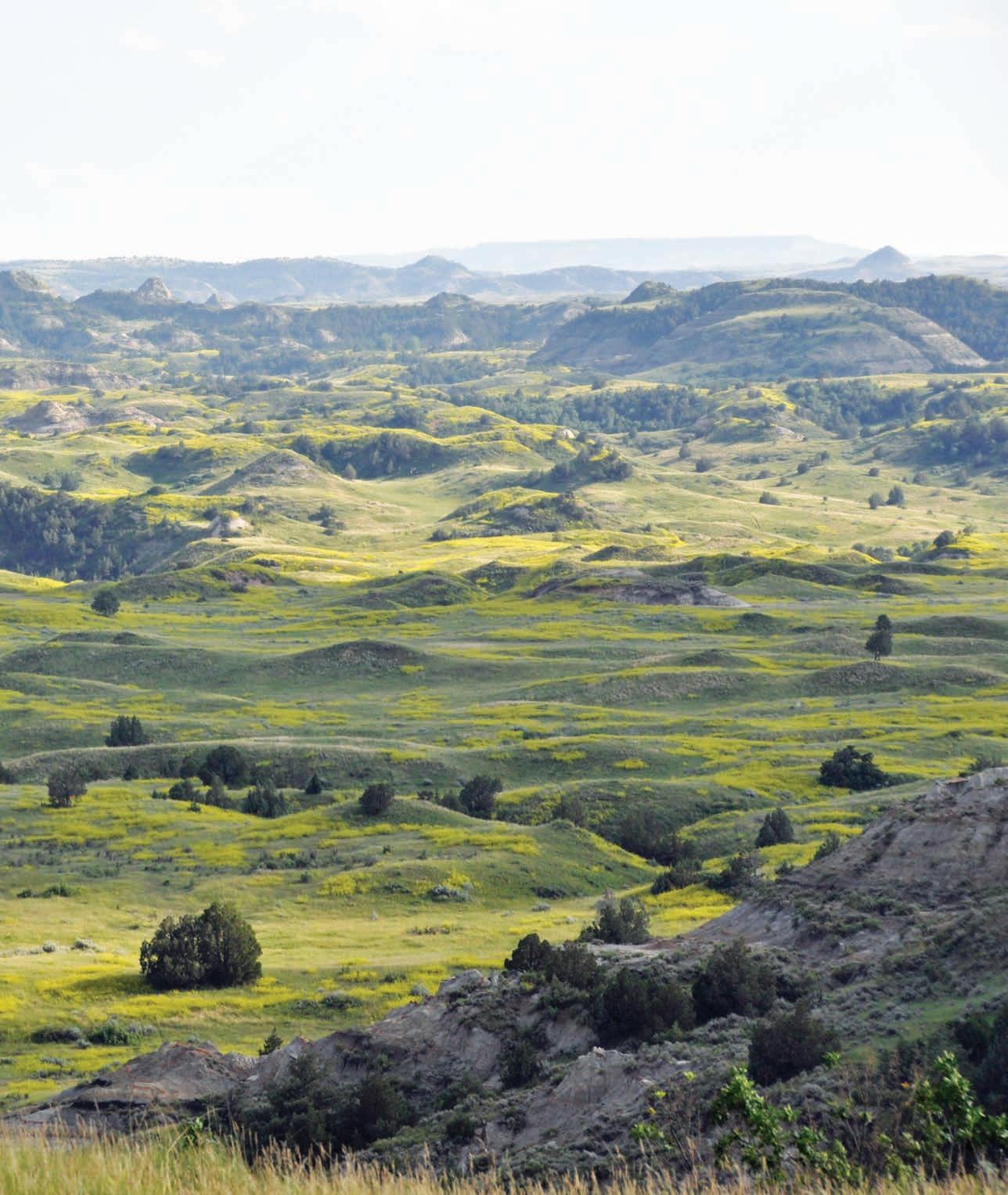
28 minute read
American Safari
story and photos by Lisa Ballard
great places to watch wildlife without leaving the united states
The Merriam-Webster Dictionary defines a safari as “a trip to see or hunt animals, especially in Africa.” For anyone who has had the opportunity to go to Africa on a safari, the experience ranks up there among most memorable experiences in life. Even for a welltraveled adventurer and photographer like myself, trips to Africa are infrequent and special. For my other safaris, which are much cheaper, easier logistically, and with fewer health and travel risks, I don’t need a passport.
Wild animals in their native habitats are abundant in the United States, too. While you won’t see giraffes nibbling the treetops or leopards lounging in acacia trees, you can witness pronghorn sprinting across a plain at 50 miles per hour, an elk bugling on the edge of the timber, or an alligator sunning itself on the edge of an estuary.
The United States is home to 2,972 native mammals, birds, reptiles, amphibians, and fish. The question is where to go to see a significant sampling of them in one place. That depends, of course, on what species you want to see that share the same habitat. Better yet, if you pick a place that has several ecosystems in close proximity, you’ll see even more animals.
Yellowstone National Park
If you’ve got a hankering for the great herds on the Serengeti in Tanzania, consider the western prairie, not the cultivated acres of corn and wheat in states like Kansas and Nebraska, but the wilder, higher sagebrush and native grasslands closer to the Rocky Mountains. Yellowstone National Park is the most famous of such places,
BIGHORN SHEEP YELLOWSTONE NATIONAL PARK
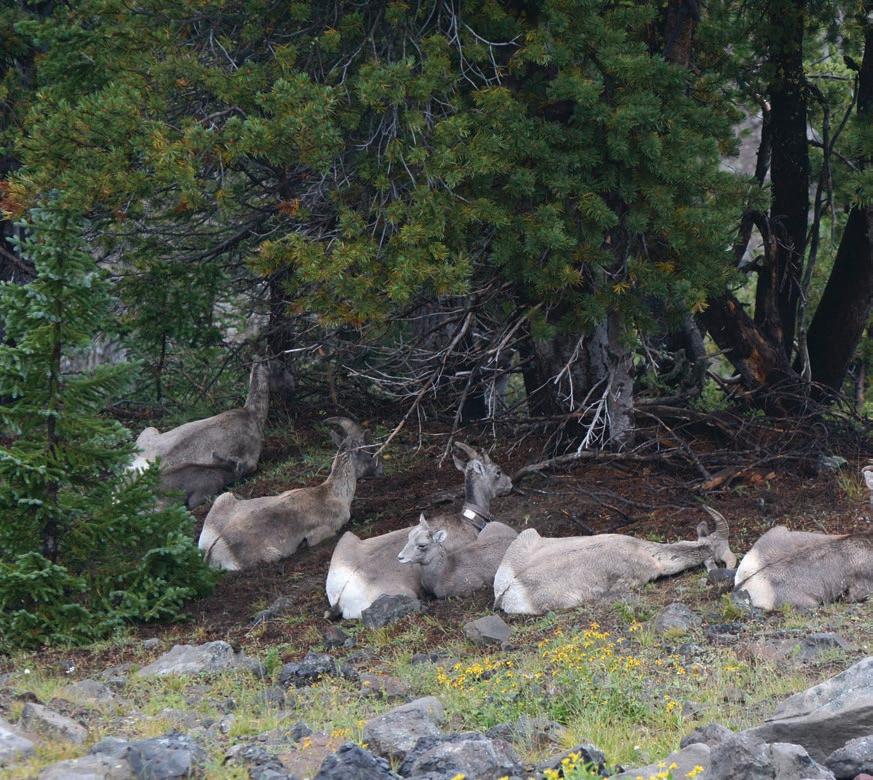
Clockwise from top left:
Bighorn ewes and lambs rest in the shade beside the trail up Mt. Washburn. A bull elk looks for a herd for cow elk during the rut. A herd of cow elk graze near a stand of colorful aspen trees. A mother bison follows her calf through the sagebrush. An alligator starts to yawn on the edge of a watery slough.
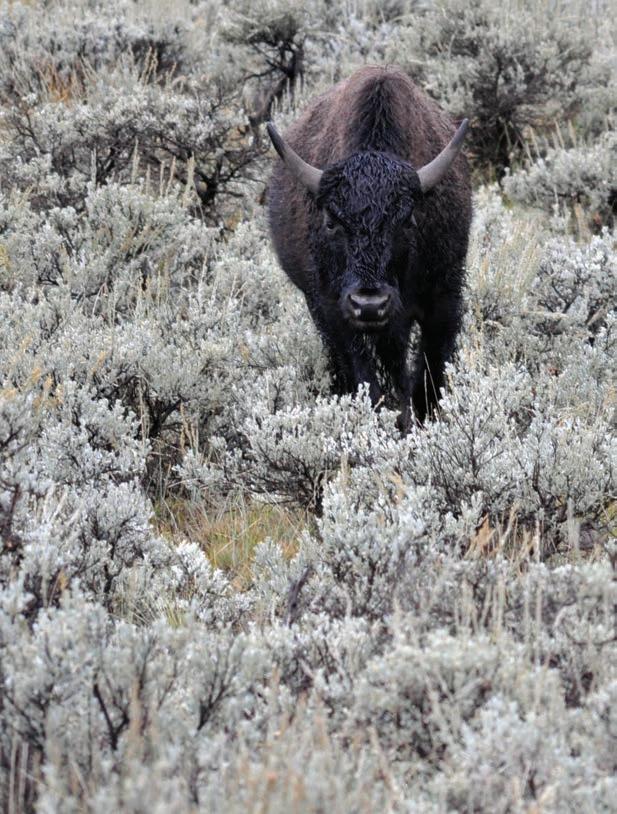
AMERICAN ALLIGATOR EVERGLADES NATIONAL PARK

BISON COW AND CALF YELLOWSTONE NATIONAL PARK

BULL ELK ROCKY MOUNTAIN NATIONAL PARK

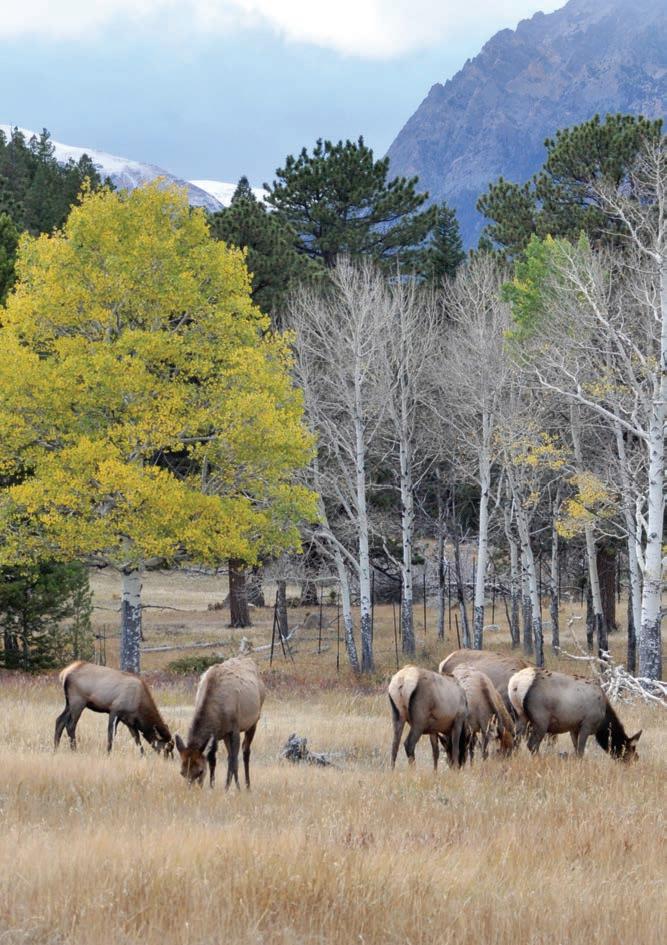
ELK HERD ROCKY MOUNTAIN NATIONAL PARK

PRONGHORN ANTELOPE YELLOWSTONE NATIONAL PARK

BISON NATIONAL BISON RANGE

Clockwise from top left:
Pronghorn does pause on the prairie. Bighorn rams knock heads, vying for a ewe, atop a rocky clifftop. A mountain goat watches hikers on a trail from a massive boulder. A 1,500-pound male bison prepares to roll in the grass.
MOUNTAIN GOAT GLACIER NATIONAL PARK

BIGHORN SHEEP CUSTER STATE PARK
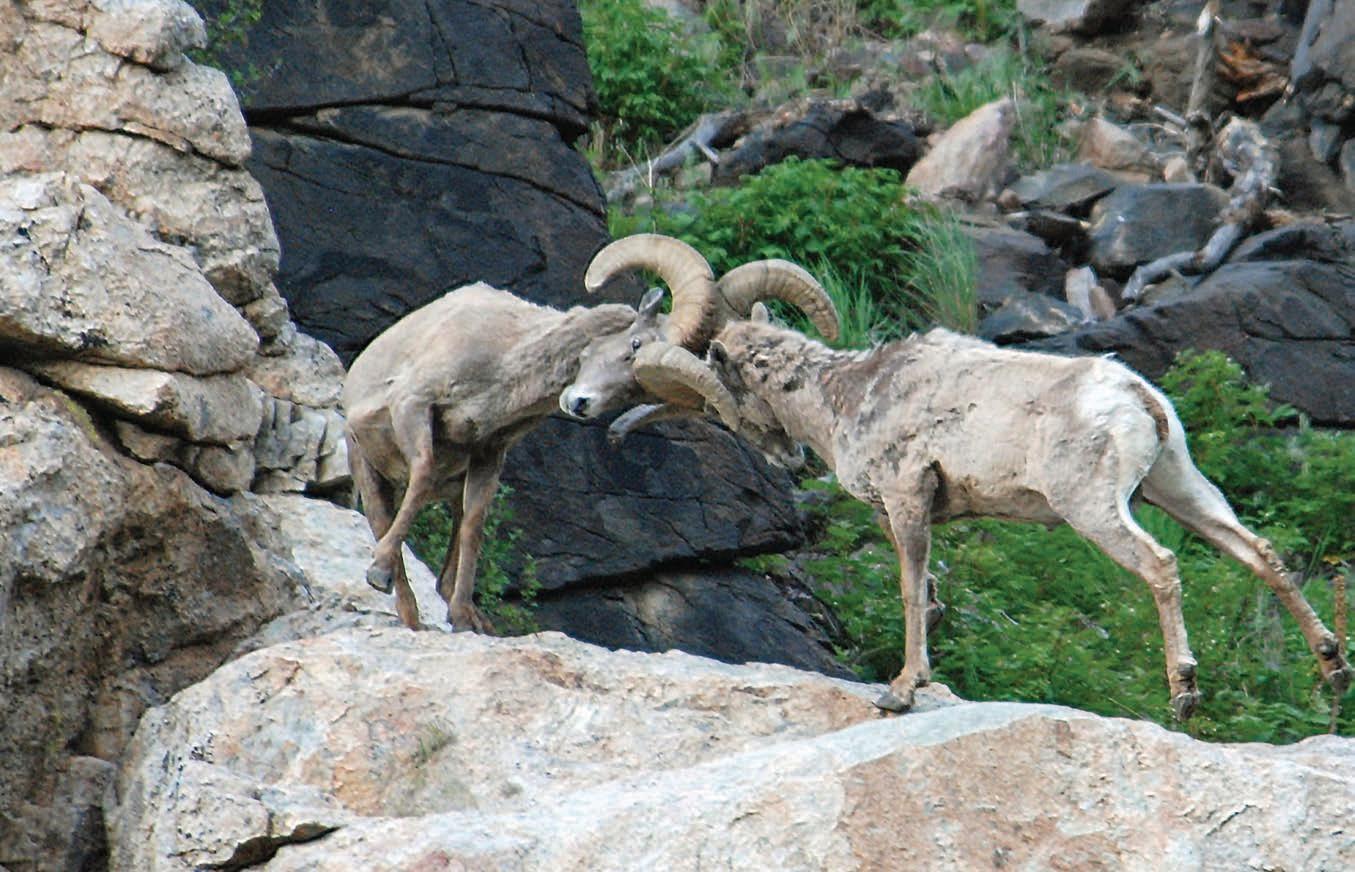
online
extra See more photos from the American
Safari at www.hereinhanover.com.
and for good reason. The Hayden Valley in Yellowstone is often called America’s Serengeti due to the herds of bison and elk that graze its massive meadows. At 2.2 million acres, Yellowstone is much larger than the real Serengeti (450,000 acres). In addition to bison and elk, you may see coyotes, grizzly bears, black bears, wolves, and otters. Three hundred species of birds migrate through or reside in the park, along with 67 species of mammals.
I visit Yellowstone several times per year. In addition to traversing the Hayden Valley, I love to hike Mount Washburn on Dunraven Pass, which is really a two-mile walk up a closed dirt road. It’s a great spot to see bighorn sheep, which often graze beside the trail, and I usually spot endangered picas scurrying around the talus near the summit.
National Bison Range
The problem with Yellowstone is the crowds. At the height of the summer tourist season, I prefer the National Bison Range in Western Montana. In 1908, President Theodore Roosevelt established this national wildlife refuge to permanently protect native bison. In doing so, he also created a refuge for bighorn sheep, pronghorn, elk, mule deer, mountain lions, badgers, coyotes, and a host of other animals.
The National Bison Range (18,800 acres) is a broad, undulating grassland on the edge of the Mission Mountains, with elevations from 2,585 feet GREAT PLACES TO SEE . . .
Bears: Denali National Park (AK), Glacier National Park (MT), Yellowstone National Park (WY) Bighorn Sheep: Glacier National Park (MT), Garden of the Gods Park (CO), Custer State Park (SD), access road to Big Sky Resort (MT) Bison: Yellowstone National Park (WY), National Bison Range (MT), Theodore Roosevelt National Park (ND) Elk: Rocky Mountain National Park (CO), National Elk Refuge (WY), Yellowstone National Park (WY) Mountain Goats: Glacier National Park (MT), Mount Evans (CO) Mule Deer: Rocky Mountain National Park (CO), beside many roads! Wolves: Yellowstone National Park (WY), Isle Royale National Park (MI)
AMERICAN SAFARI DOS AND DON’TS
DO keep your distance. An animal can be placid one moment then turn aggressive the next. DO stay in your car. Similar to an African safari, the safest place to watch wildlife is from a vehicle, and you’re less likely to disturb the animal. Roll down the window, but don’t get out. DO look for wildlife at sunrise and sunset, especially during the summer. Many animals bed down or take shelter in the timber during the heat of the day. DO use binoculars or a spotting scope to view animals. It might be the only way you get to see them if they are far away. DON’T try to get an animal’s attention or attract them to you with game calls, shouting, or whistling. It stresses the animals, which can turn aggressive. For example, if you bugle at a big bull elk during the rut, he might try to run you off. DON’T feed wildlife. It’s dangerous and you don’t want wild animals to recognize humans are a food source, which can lead to a costly relocation or euthanization. DON’T turn your back. If you are on foot, diligently watch an animal to detect a mood change and to react more quickly. DON’T take selfies because that requires turning your back to the animal! DO be patient. Animals disappear or move farther away, but they may return if you’re quiet. Also, traffic in wildlife viewing areas moves slowly or not at all, especially if an iconic creature appears. DON’T block traffic. If you see an animal that you want to watch, pull completely off the road. If there’s no place to park, enjoy the view while you can, but keep moving. DO research your route and what animals you might see before you go. The more you know about place and the wildlife, the more you’ll likely see animals.
GRIZZLY BEAR SOW WITH CUBS GLACIER NATIONAL PARK

Above: A grizzly bear teaches her twin cubs to catch fish, a favorite food for building up fat for their winter-long hibernation. Opposite: A wild burro foal playfully nuzzles its mother several yards from a park road.
to 4,885 feet. The variations in altitude create a variety of ecosystems, including grasslands, pine and fir forests, riparian areas, and wetlands. It is one of the last publicly owned native grasslands in the country, a lesser known gem with a plethora of wildlife in a relatively compact geographic area.
My favorite reason to visit the National Bison Range is to see bison, of course, but I usually find big mule deer bucks, too. These western ungulates have the same size body as a whitetail deer, but their antlers grow differently (forking instead of along a main beam) and they’ve got a tail like a short rope and impressive ears. Instead of running, they stot, which resembles springy jumps forward. The National Bison Range is also a terrific place to see trumpeter swans, which feed voraciously on green duckweed that grows in the ponds and backwaters around the refuge.
Custer State Park
Another lesser known gem is Custer State Park in South Dakota, probably because it’s a state park rather than a national park. Don’t let the designation fool you. Located in the scenic Black Hills, this 71,000-acre wildlife reserve has both wavy grasslands and craggy mountains, including Black Elk Peak (formerly Harney
WILD BURROS CUSTER STATE PARK

Peak), elevation 7,244 feet, the highest point in the United States east of the Rocky Mountains.
For wildlife watching, the park’s 18-mile Wildlife Loop Road offers one of the best safari experiences in the country. From your car, you’ll typically see bison, deer, elk, and coyotes on the open grasslands. The loop takes you through a prairie dog town, where these cute critters wrestle and kiss each other. I’ve seen bighorn sheep butt heads on the cliffs above the road and birds of prey swoop down upon unsuspecting snakes and mice. Don’t be alarmed if the wild burros push their noses against your car window when you stop to photograph a pronghorn doe with her fawns.


Visit avagallery.org to register for online classes and events
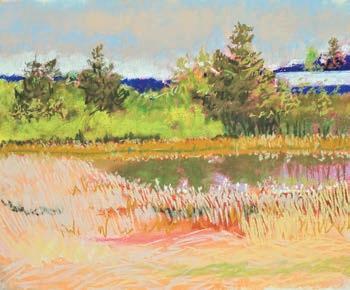

online ART EXHIBITIONS
Theodore Roosevelt National Park
Remember the folk song “Home on the Range”? It could easily be about Theodore Roosevelt National Park in North Dakota’s Badlands, another wildlife hotspot where “the buffalo roam, and the deer and the antelope play.” The steep, hilly badlands create a number of microclimates, including arid slopes, temperate juniper woodlands, and moist river bottoms, in which a wide variety of animals reside. Herds of bison freely roam throughout the park, along with elk and mule deer. I love to watch the wild horses grazing placidly or thundering across the prairie when something startles them. And hours evaporate watching the adorable antics of the prairie dogs.
In Hanover, whitetail deer, moose, racoons, and skunks are the most common animals you’re likely to see. On rare occasions, a black bear or coyote shows itself. More likely, the tracks of an animal are the only evidence of their presence. Perhaps that’s why safaris are so enticing. You can see not one but many species. While the animals are different in the United States, going on an America safari can be as satisfying as an African one. H

clASSES for all dEdIcATEd instructors

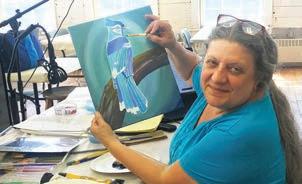
PREPARE to be dElightEd
WILDLIFE PHOTOGRAPHER LISA BALLARD YELLOWSTONE NATIONAL PARK
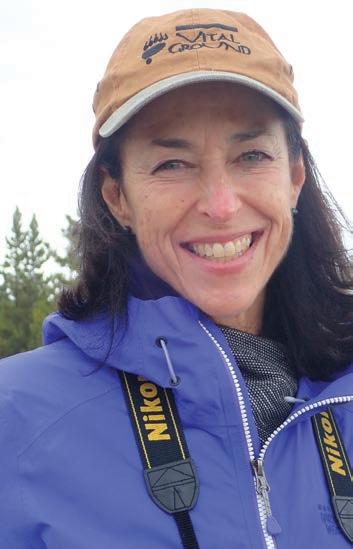
Different wavelengths correspond to the red and blue LED colors, Dr. Berger explains. “The difference is important because it determines how deep the light penetrates the skin. The fact that they penetrate at different degrees correlates to them having different effects on the skin.”

Consider Light Therapy
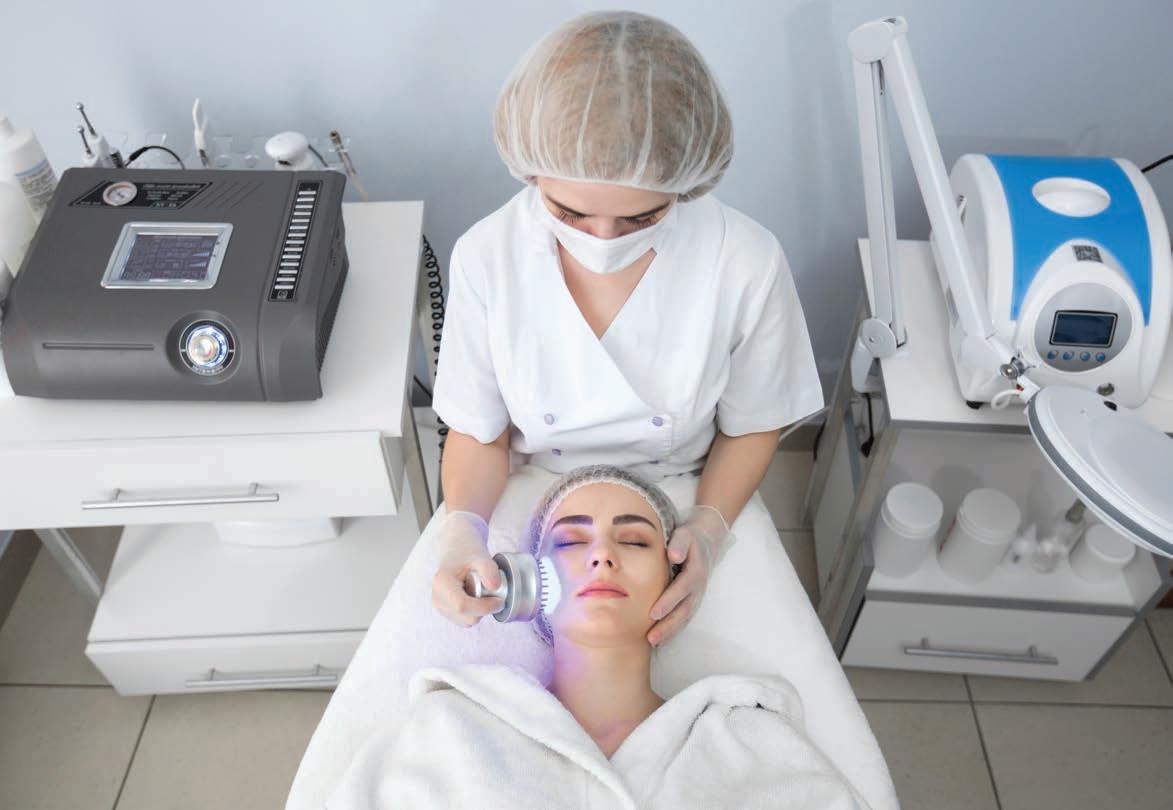
A PROMISING OPTION TO KEEP SKIN GLOWING
WE’VE ALL HEARD ABOUT THE BENEFITS OF LIGHT THERAPY TO IMPROVE MOOD and relieve depression during the dark days of winter, but another form of light therapy—LED light as a cosmetic treatment—could also boost our spirits by improving our appearance.
It’s relatively new and somewhat limited, says Dr. Andre Berger, founder of the Rejuvalife Vitality Center in Beverly Hills, and short-term studies are not definitive. But it can be effective, and he says consumers need to be informed about their options. At-home devices are available and treatments can be done in a spa, salon, or dermatologist’s office. The key, as always before embarking on any skin therapies, is to check with your doctor to be sure there are no underlying medical conditions, cautions Dr. Berger. LED light therapy and IPL—intense pulse light—target different conditions that range from aging skin to acne to hair loss.

SICILIAN-STYLE SEAFOOD & PASTAServing our seafood lovers of the north.

The Daily Catch pays homage to the culinary brilliance, family traditions, and heritage of authentic Sicilian dining. The vibrant menu includes, sustainably sourced calamari and seafood, delicate hand-made pasta (like our famous black squid ink), robust comfort foods and a perfectly paired wine list.

THE DAILY CATCH
61 Central Street. Woodstock Vermont | 802.332.4005 | www.thedailycatch.com
William H. “Star” Johnson, Broker Armando “Joe” Roberto, Agent Meghan Ward, Associate Broker
Representing Buyers and Sellers Big Green Real Estate 5 Olde Nugget Alley, Suite 5 Hanover, NH 03755 Phone: 603-643-3942 Cell: 603-381-8603
www.biggreenre.com
What Is Light Therapy? Different wavelengths correspond to the red and blue LED colors, Dr. Berger explains. “The difference is important because it determines how deep the light penetrates the skin. The fact that they penetrate at different degrees correlates to them having different effects on the skin.”
Most discussion about light and the skin is about the effects of UVA and UVB because it’s better understood, he says, and while there aren’t yet longterm studies about the effectiveness of LED therapy, but there is evidence of short-term benefits.
What we do know is that the different LED colors affect the skin. “Red light acts to stimulate collagen, and it’s universally understood that collagen production is a key factor in improving or reversing the signs of skin aging due to sun exposure and the aging process. Red light could help to reverse some of that.” Red light also has been shown to be effective in dealing with hair loss for both women and men, he says, by stimulating the hair follicles. A cap placed on the head is lined with LED lights and is worn for a certain period of time and helps promote hair growth.
Blue light is used to treat acne by reducing the production of the oilproducing glands that plug up the skin, which eventually leads to acne.
“There’s also some evidence that the bacteria that is believed to be linked to acne is killed by blue light. So it works in two ways: by reducing the production of oil that plugs up the sebaceous glands and reducing the bacteria that causes the inflammation.” To more aggressively treat acne, the patient can be treated with a skin sensitizer before the light is applied.
Intense Pulse Light Intense pulse light is another form of light therapy that has been around for a while and has proven to be effective in dealing with hyperpigmentation, fine lines, rosacea, tiny red blood vessels, small superficial veins, and even hair removal. Different wavelengths are applied to different skin conditions. Eye protection is crucial with all forms of light therapy, Dr. Berger says, to guard against damage to the eyes.
Results will vary among patients, Dr. Berger says, depending on the device used. If one can get an effective and safe home device, it’s something you can do at home. Home devices can cost from $150 to $2,000 and their effectiveness can vary. LED light therapy in a spa, salon, or medical office is more expensive, but the professionals have vetted the device, know what they’re doing, and the procedure is more effective. One treatment is unlikely to do much, Dr. Berger says; no less than once a month over a period of time would lead to better outcomes.
Whether at home or in a professional setting, LED light therapy shows promise. Long-term studies are not in yet, says Dr. Berger, but “we can say it can help.” H
For more from Dr. Berger, see his book THE BEVERLY HILLS ANTI-AGING PRESCRIPTION.
We Get It!






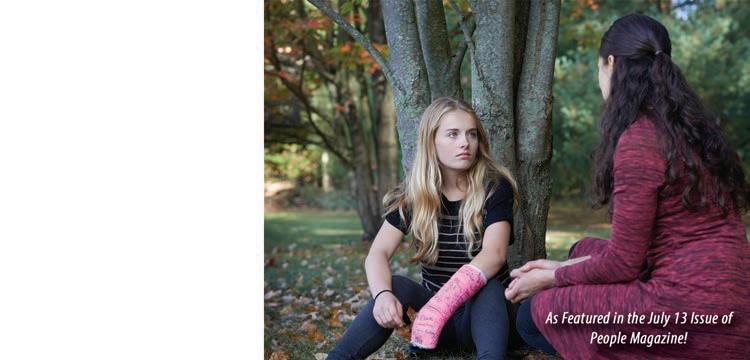
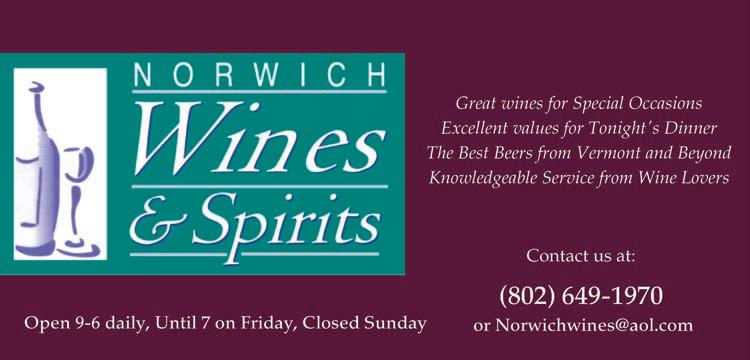

THE HOOD MUSEUM OF ART@ DARTMOUTH COLLEGE
hoodmuseum.dartmouth.edu
The Hood Museum of Art continues to bring you diverse virtual programs while the museum galleries remain closed. Join us online for lectures with scholars and discussions with artists. Contribute to important conversations on current issues and take a closer look at works in the collection. Additionally, we will offer numerous creative programs for adults. Programs will be listed on the Hood Museum of Art website with registration links. To dive deeper, take a look at the Hood Museum’s YouTube Channel where you can explore a rich array of past public programs!
Enjoy the Hood Museum of Art’s Distinguished Collection of Public Art This Winter
This walking tour showcases a selection of outdoor sculptures that make the Dartmouth campus more meaningful and engaging. These works utilize a wide variety of materials, including aluminum, bronze, steel, stone, and wood, chosen for their ability to withstand even the harshest of Hanover winters. We expect the walking tour to take under an hour and encourage you to read the freestanding labels that are situated in front of each sculpture to learn more about the artists and the history and meaning of the individual works of art on the tour. Visit our website to download a pdf of the walking guide.
Live Arts in Your Living Room—Welcome to Hop@Home

The Hop’s new season represents musicians that vault over the boundaries of genre and geography, stirring works by a new generation of dancers and theatre-makers, and conversations about the arts and issues of the day. Each week, our virtual stage brings adventurous artistry into your living room. The Hop offers a varied weekly lineup of online programming including live-streamed performances, film recommendations and live chat, digital dance parties for kids and grown-ups, and projects cooked up by our ensemble directors. Don’t miss out on a performance! Visit hop.dartmouth.edu/hop-at-home to subscribe to weekly Hop@Home emails to find out about all upcoming events.
November 21 Anthony McGill with Gloria Chien

Ursula von Rydingsvard, Wide Babelki Bowl, 2007, cedar. Gift of Margarit and Jens Jacobs; 2019.90. © Ursula von Rydingsvard. Photo by Brian Wagner. November 21
Anthony McGill with Gloria Chien
Anthony McGill, principal clarinet of the New York Philharmonic, joins forces with gifted pianist Gloria Chien.
Virtual Event: YouTube, 8pm

December 3 Member Event: Chanticleer

December 3
Member Event: Chanticleer
Ring in the holiday season with this glowing a capella “orchestra of voices.”
Virtual Event: Zoom, 7:15pm; YouTube, 8pm
January 14
Catalyst Quartet
A genre-defying ensemble that reimagines the classical music experience.
Virtual Event: YouTube, 7:30pm
January 28
Dance Heginbotham: Paganini’s Caprices
Dance Heginbotham joins forces with violinist and composer Colin Jacobsen for this exciting commission. This choreographic premiere features intimate video vignettes that reflect this time of challenge, unrest, and rebuilding.
Virtual Event: YouTube, 7:30pm
January 31
Anne-Sophie Mutter & Friends
Committed to the performance of traditional composers as well as the future of music, Mutter is a fixture in the world’s major concert halls and the classical music scene as a soloist, mentor, and visionary.
Virtual Event: YouTube, 7:30pm January 14 Catalyst Quartet
January 31 Anne-Sophie Mutter & Friends January 28 Dance Heginbotham: Paganini’s Caprices


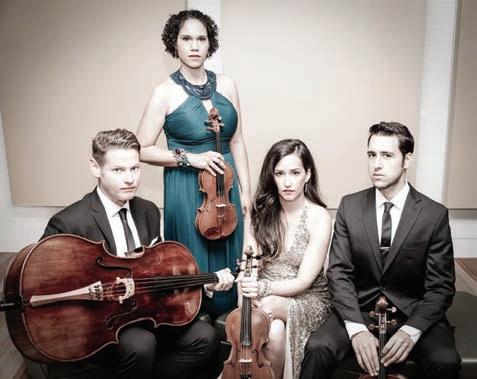

HAPPENINGS: Winter 2020/2021 DECEMBER ∂ JANUARY ∂ FEBRUARY
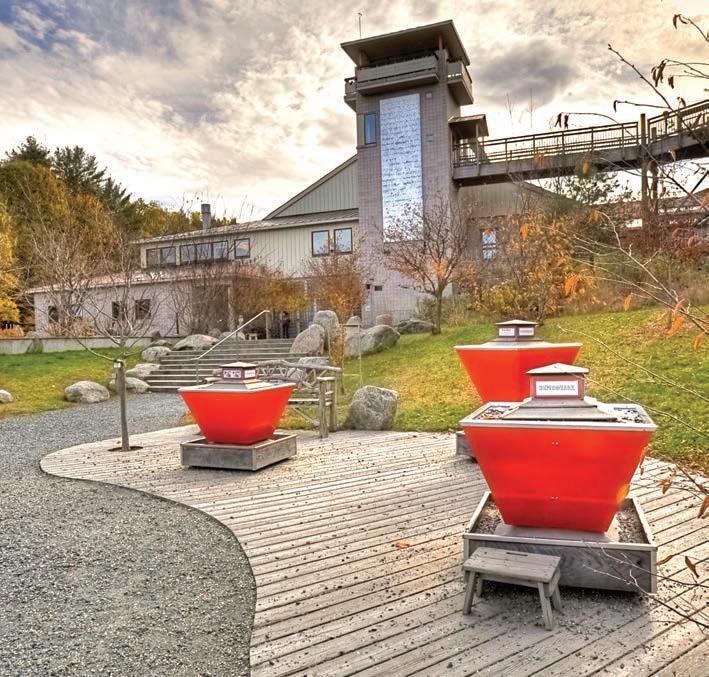
Montshire Museum of Science
One Montshire Road Norwich, VT (802) 649-2200 www.montshire.org
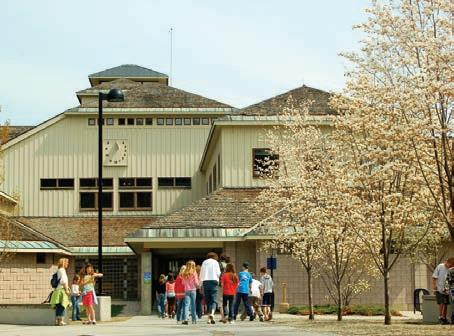
Plan Your Visit
The Montshire is open for both indoor and outdoor exploration! We have designed your visit to prioritize health and safety, as well as joyful science learning! Please review the changes to our hours, admission, ticketing process, and visitor policies. Preregistration is required for each visit.

Exhibit: Prehistoric Giants
Step back in time when you visit Prehistoric Giants, featuring impressively enormous life-size sculptures by New Hampshire-based artist Bob Shannahan. This outdoor exhibition explores life from the prehistoric past through pieces created with various natural materials.
November, December, January Family Activities at the Science Discovery Lab
Grab your own table in the new second floor Science Discovery Lab and engage in hands-on activities for the entire family, from making toy parachutes to experimenting with electricity and exploring chemistry to examining ticks up close. Sessions are limited to five families. Visit montshire.org for days, times, and more information.
December 3 Homeschoolers Series: Artful Insects (ages 9–12)
Explore the diversity and adaptations of insects in this three-part series that combines natural history and making. 1pm
December 16 Health Research Live! Advances in Telehealth
Join us for community discussions on health research priorities in the Upper Valley. Hear from scientific researchers, community members, and organizations— all providing their perspectives on health issues. 12pm You'll learn the joy, wonder, and science that can be found in just soap and water in Bubbles: Science in Soap.
Discover the Joy of Science at Home!
Developed, hosted, and curated by the • Downloadable activities, such as Montshire’s education team, this online scavenger hunts and puzzles learning series consists of videos and • Video explorations of science resources that allow young learners concepts to delve into a different topic using a • Learn all about pond life, boats, the variety of learning methods. sun, bubbles, skeletons, light, air, Learning opportunities include: and more! • Teacher’s Guide for educators • DIY science projects for kids and parents to do at home Visit our website and click on Montshire at Home for more information.


GET CONNECTED
HERE IN HANOVER and neighboring communities FALL 2020 VOLUME 25, NO.3 $4.95 HANOVER here in
Get listed on the hereinhanover.com BUSINESS DIRECTORY and you will also be included on our printed list in every issue of Here In Hanover (see page 21).

FALL 2020
HERE’S HOW!
Call Bob Frisch at (603) 643-1830 or email rcfrisch1@comcast.net. Find out how you can connect with our readers. It’s easy, inexpensive, and another way to reach an affluent and educated audience.
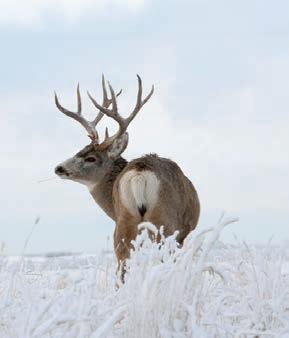
HIKES OF THE MONTH Get Out and Explore MEETING NEW CHALLENGES How Businesses Are Adapting CELEBRATING WOMEN’S SUFFRAGE 100 YEARS OF VOTING and neighboring communities WINTER 2020/2021 VOLUME 25, NO.4 $4.95 HANOVER here in AN AMERICAN SAFARI DISCOVER GREAT PLACES TO WATCH WILDLIFE HERE IN HANOVER WINTER 2020/2021

SUBSCRIBE
Share the wonder of our beautiful area and the latest news all year long with a Here In Hanover gift subscription. Friends and family who have moved away from the area will be especially appreciative. Be sure to order a subscription for yourself too!
AREA FOOD PANTRIES NEIGHBORS SERVE THE COMMUNITY MY BRIGADEIRO MAKING HANOVER A LITTLE SWEETER


The Norwich Bookstore
291 Main Street Norwich, VT (802) 649-1114 norwichbookstore.com
The Norwich Bookstore is slowly, carefully opening for browsing by appointment only. Masks are required and hand sanitizer will be provided throughout the store. They are not handling cash at this time, so if you wish to make a purchase, please come prepared with a credit card or check. To schedule a time to browse, go to the calendar link on their website and choose a date and time. Anyone without Internet access may call the store to schedule a time.
The Norwich Bookstore will continue to offer online author events and more throughout the winter! Visit norwichbookstore.com regularly for the most up-to-date event listings.
Howe Library
13 South Street Hanover, NH (603) 643-4120 thehowe.org
November 19 Pop-Up Library
Browse and check out a selection of new items under the tent in the lower parking lot. 12–2pm
November 30 Online: Cine Salon: Terry Cannon, Baseball Reliquary
Albert Kilchesty will discuss Terry Cannon, the gregarious cultural activist. His odd but engaging art-life-library projects include The Baseball Reliquary Shrine of Eternals, Pasadena Filmforum, and Skinned Knuckles, each honored individuals inhabiting the fringes of
mass culture. Please contact megan. coleman@thehowe.org for an invite. Zoom, 7–9:30pm
December 14 Online: Cine Salon: An Art Lost to Digital?
One of the great treasures at the National Gallery of Art, Washington, DC, is Peggy Parsons, head of the public film program. For decades, Parsons has presented intelligent, thought-provoking series on a wide range of approaches to cinema. She will discuss the encroaching digital revolution. Please contact megan. coleman@thehowe.org for an invite. Zoom, 7–9:30pm
Hikes for Every Month of the Year!
Download full directions for your own self-guided hike around Hanover—where to go, what you’ll see, plus a glimpse into the backstory. Access each hike on your phone (if cell service allows) or print the PDF version to take with you. Visit Hanover Conservancy’s website, hanoverconservancy.org/hike-of-themonth, for more information.
December Behemoths of Balch Hill, 0.8 miles round trip Fullington Farm & Old Highway 34, 1.8 miles
January Hudson Farm & the AT, 1.75 miles round trip
February
Childs Farm Loop at Trescott Lands, 1.4 miles Mill Pond Forest & Dana Pastures, 2 miles Mink Brook & the Harris Trail, 1.3-mile loop Tunis Brook Mill Lot, 1.1 miles round trip Provider
We Listen to Your Concerns Custom Treatment Alternatives Long Experience
Fine Esthetic Judgement VIRTUAL CONSULTATIONS
At www.drneely.com













Other Noteworthy Events
Norwich Podcast Driving Tours: Early Settlement, Kids’ Early Settlement Tour, Norwich Schools, and Rivers & Mills
Enjoy four podcast driving tours of Norwich. Each begins and ends at the Norwich Historical Society and lasts a little over an hour with eight to nine stops. Listen on your computer or download onto your phone. Download the accompanying maps to help guide you through the tour. Norwich Historical Society norwichhistory.org
Online Exhibit: Norwich Women Crafting the Future
Norwich Historical Society norwichhistory.org
Online Exhibit: Mad for Mid-Century Modern
Norwich Historical Society norwichhistory.org
Online Exhibit: Poets and the Past
Norwich Historical Society norwichhistory.org
December 2 Community Forest Planning Session
Learn about and help plan for the future of Mink Brook Community Forest. Hanover Conservancy, 7pm hanoverconservancy.org
December 2 Digital: Martin Luther King: Dare to Dream
Zoom, 7pm vermonthumanities.org
December 3 Environment & Society: Hanover Conservancy Annual Meeting
Zoom link will be posted on HC website. Hanover Conservancy, 6pm hanoverconservancy.org
January 6 Telling Disability Stories: Histories, Representations, and Imaginations
Norwich Congregational Church, 7pm vermonthumanities.org
February 3 Ancient Eyes – Ageless Skies
Norwich Congregational Church, 7pm vermonthumanities.org
APD Lifecare 51
AVA Gallery and Art Center 92
About Face Skin Therapy 41
Annemarie Schmidt European Face and Body Studio 10
Baker Orthodontics 16
Big Green Real Estate 94
Brown Furniture 43
CB Lifestyles 11
Carpenter & Main 63
Cedar Circle Farm & Education Center 82
Charter Trust Company 17
ClearChoiceMD Urgent Care 71
Colby Insurance Group 42
Cota & Cota 100
Crossroads Academy 72
Crown Point Cabinetry 8
Crown Point Select 19
DRM 101
Dartmouth Skiway 18
Designer Gold 21
Donald J. Neely, DMD, MSD 101
Dowds’ Country Inn & Event Center Back cover
Dr. Roger Phillips 74
Dutillle’s Jewelry Design Studio 29
Estes & Gallup 98
Evan Pierce Realtor 31
Four Seasons Sotheby’s International Realty 6 & 7
G.R. Porter & Sons 94 Gilberte Interiors 9 Griff & Company Boutique 63 Hanover Eyecare 48 Hanover Road Dental Health 79 Hanover Terrace 95 Hill Opticians & Gallagher Eye Care 74 Hood Museum of Art 72 Indigo 30 JMH Wealth Management 61 James R. Predmore, DDS 60 Jeff Wilmot Painting & Wallpapering 83 Junction Frame Shop 102 Kendal at Hanover 79 Kimball Union Academy 33 King Arthur Baking Company 82 Lemon Tree 29 LindeMac Real Estate Inside back cover Little Istanbul 61 Lou’s Restaurant 37 Lyme Road Dental 2 Martha E. Diebold Real Estate Inside front cover Matt Brown Fine Art 63 Mill Gardens 16 Montshire Museum of Science 26 Mountain Valley Treatment Center 95 Mt. Ascutney Hospital 91 My Brigadeiro 62 NT Ferro Estate & Custom Jewelers 25 Nathan Wechsler 102 Northern Motorsport 49 Norwich Knits Yarn & Craft 63 Norwich Wines & Spirits 95 Peraza Dermatology Group 13 Pine at Hanover Inn 26 PowerHouse Mall 60 RT Mudge and Associates Architects 101 Ramunto’s Brick & Brew 62 Red Kite Candy 25 River Road Veterinary Clinic 98 Snyder Donegan Real Estate Group 4 Studio Nexus Architects + Planners 33 Terrace Communities 41 The Carriage Shed 15 The Daily Catch 94 The Dorr Mill Store 100 The Gilded Edge 62 The Hanover Inn 26 The Lyme Inn 50 The Ultimate Bath Store 27 The Village at White River Junction 3 Timberpeg 92 Upper Valley Haven 50 Valley Floors 51 Vermont Cabinetry 5 WISE 83 Wells Fargo Advisors 1 William Smith Auctioneers 30 Willing Hands 18 Woodstock Inn & Resort 91
For more information about print and online advertising opportunities, contact Bob Frisch at (603) 643-1830 or email rcfrisch1@comcast.net.
Our Annual trend watch Issue



LEARN about the LATEST TRENDS in the HOME INDUSTRY...


• Building • Remodeling • Decorating • Landscaping • Outdoor Living • And Much More!
A Conversation with Terry Straight Fire chief for the town of Orford

PHOTO BY JOE MCQUEENEY
What have been your department’s biggest challenges as 2020 comes to a close? Not being able to hold regular monthly training sessions thanks to COVID-19 and not knowing how COVID-19 will impact 2021. We also have not been able to attend yearly training sessions at some of the state’s annual training weekends.
As Orford’s fire chief, it seems you wear many hats. I do. I’m the fire chief, and my full-time position for the town is road agent, which consists of overseeing a three-person crew and roughly 52 miles of road. I feel as road agent that it benefits the town to have their fire chief available pretty much 24/7. It allows me to keep an eye on water sources as well for fire safety throughout the town. I’m also a member of the town’s planning board.
California’s wildfire season broke records in 2020. Do you see an increased fire danger trend in New Hampshire? We have seen an increase in wildland fires. A huge problem is that these fires are burning deep into the ground. We had a couple fires that we thought had burned out, but we were called back three or four days later because the fires burned down into the ground and had burned along a root system and come back up in other spots. I have been in the fire service for over 46 years, and I cannot remember seeing things so dry.
What type of person gives unpaid service and sacrifice as a volunteer? One that cares for his or her community and is willing to give back. This person is also willing to get up from the dinner table or be awakened at 2am when it’s below zero to help someone beat a fire or help with a medical emergency. I have missed many holidays, my son’s sporting events, and many meals to help someone in need.
When you get out of the fire station, how do you unwind and enjoy what this area has to offer? I like to cook. I have my own barbecue/catering business that I set up at some of the New Hampshire and Vermont fairs. I also like to hop on my four-wheeler and explore the many trails that are in the area. I like to hang out with my son and my dog Molly and get together with friends for a cookout or just going out to eat. H




